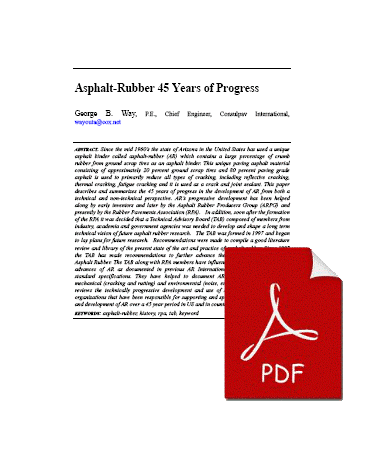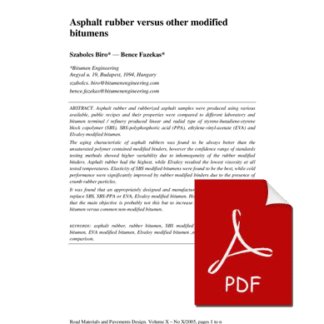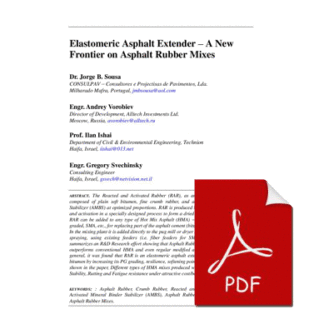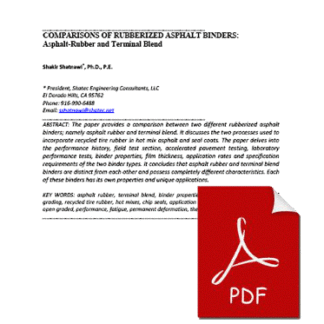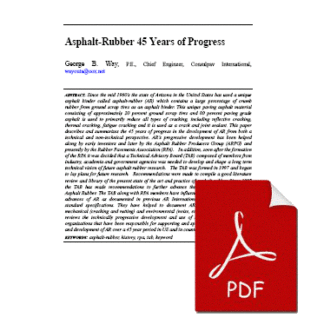Description
Since the mid 1960’s the state of Arizona in the United States has used a unique asphalt binder called asphalt-rubber (AR) which contains a large percentage of crumb rubber from ground scrap tires as an asphalt binder. This unique paving asphalt material consisting of approximately 20 percent ground scrap tires and 80 percent paving grade asphalt is used to primarily reduce all types of cracking, including reflective cracking, thermal cracking, fatigue cracking and it is used as a crack and joint sealant. This paper describes and summarizes the 45 years of progress in the development of AR from both a technical and non-technical perspective. AR’s progressive development has been helped along by early inventors and later by the Asphalt Rubber Producers Group (ARPG) and presently by the Rubber Pavements Association (RPA). In addition, soon after the formation of the RPA it was decided that a Technical Advisory Board (TAB) composed of members from industry, academia and government agencies was needed to develop and shape a long term technical vision of future asphalt rubber research. The TAB was formed in 1997 and began to lay plans for future research. Recommendations were made to compile a good literature review and library of the present state of the art and practice of asphalt rubber. Since 1997 the TAB has made recommendations to further advance the state-of–knowledge about Asphalt Rubber. The TAB along with RPA members have influenced and supported technical advances of AR as documented in previous AR International Conferences and ASTM standard specifications. They have helped to document AR’s numerous benefits both mechanical (cracking and rutting) and environmental (noise, energy and CO2). This report reviews the technically progressive development and use of AR and of the people and organizations that have been responsible for supporting and sponsoring technical research
and development of AR over a 45 year period in US and in countries across the world.

